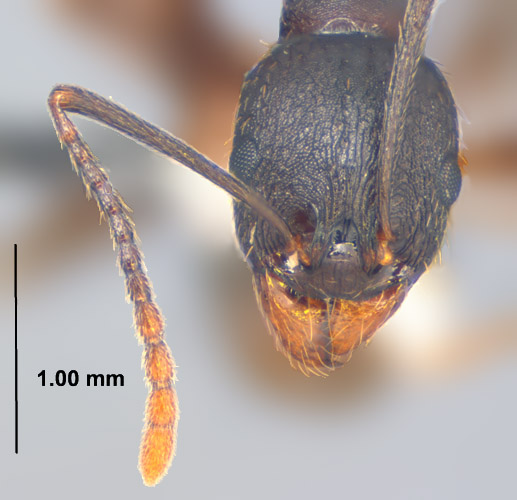Introduction
Ants in the genus Aphaenogaster are medium sized to large, slender with long legs and antennae, usually have propodeal spines (a few species lack spines), have 12 segmented antennae with the last 4 segments forming a weak club. The genus is widespread in North America and species nest in rotting wood, under bark, and in soil.
Identification
Aphaenogaster picea is a dark brownish-black to black colored species that is apparently restricted to higher elevations in mountainous or rocky habitats. Workers of this species usually have heads not as elongate as A. carolinensisand A. fulva, but instead much wider; strong and somewhat thickened propodeal spines, and dark to to piceous coloration. It is similar in appearance to A. miamiana, but has slightly smaller eyes, a more sturdy compact appearance, and the habitats where they occur in are distinctly different. It is also similar to A. rudis, which also occurs in rocky or mountainous habitats, but differs in color and possibly in the amount of sculpture present on the head, with A. rudis having more sculpture.
Biology and Economic Importance
Distribution
Although Smith (1928b) reported this species for MS, it is unlikely that it occurs in this state because the preferred habitat is not present. Recent collections of specimens from the region of MS where A. picea was reported from appear to be A. miamiana. This species has been found in AL in mountainous regions.
Literature Cited
Links
Discover Life Images




